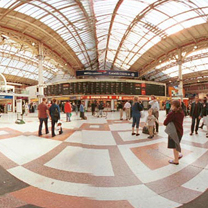HS Train Socio-economic and Spatial Effects: a Comparison of Two Case Study
Abstract
The article analyses the high speed train from a spatial and social-economic point of view. It articulates in two parts. In the first, it focuses upon the effects of high speed line on organization of territory, both in terms of space-time convergence, placing particular emphasis on the tunnel effect, and in terms of the location of economic activities around the stations and variation of transport demand. In the second part are proposed two cases of study: Spain and Japan, where the effects of high speed rail were very interesting. In Spain the launch in 1992 of high speed service of Lanzaderas that connects Madrid-Puertollano-Ciudad Real, has favored the increase of commuters that travel every day to go and work among the three cities and has changed the hierarchy between these towns. In fact, the high speed rail is contributing to improve the role of Ciudad Real in comparison to Puertollano and it’s promoting a process of territorial integration between Madrid, Ciudad Real and Puertollano creating a discontinuous metropolitan area. In Japan, the high speed line (Shinkansen) has produced the increase of population in the towns which are stations of high speed lines in comparison to the others in the proximities of the railway line and to national rate of growth; and the increase of rates of occupation in the trade and in industries ten years after the construction of high speed lines in comparison to the cities without a high speed station.Downloads

Copyright (c) 2014 Tema. Journal of Land Use, Mobility and Environment

This work is licensed under a Creative Commons Attribution 4.0 International License.
Authors who publish in this journal agree to the following:
1. Authors retain the rights to their work and give in to the journal the right of first publication of the work simultaneously licensed under a Creative Commons License - Attribution that allows others to share the work indicating the authorship and the initial publication in this journal.
2. Authors can adhere to other agreements of non-exclusive license for the distribution of the published version of the work (ex. To deposit it in an institutional repository or to publish it in a monography), provided to indicate that the document was first published in this journal.
3. Authors can distribute their work online (ex. In institutional repositories or in their website) prior to and during the submission process, as it can lead to productive exchanges and it can increase the quotations of the published work (See The Effect of Open Access)
